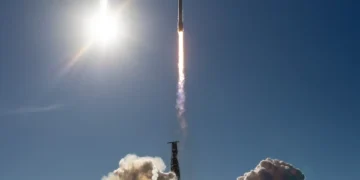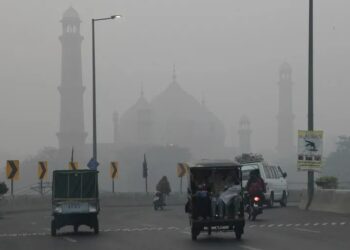Written by: Abdul Basit Alvi
In discussions concerning the Pakistan Army, there often exist misconceptions and myths regarding the distinctions between officers and soldiers. These misconceptions can perpetuate stereotypes and misunderstandings regarding the roles, duties, and dynamics within the armed forces. By addressing and dispelling these misconceptions, we can cultivate a clearer comprehension of the dynamic relationships between officers and soldiers within the army.
Some individuals assume that Pakistani Army officers exclusively make decisions, relegating soldiers to mere followers. Contrary to this belief, officers indeed hold leadership roles and are accountable for strategic decision-making, but soldiers also play a crucial role in implementing those decisions on the ground. Soldiers are trained to think critically, adapt to changing circumstances, and exercise initiative when needed. In modern warfare, decentralized command structures empower soldiers to make quick decisions based on their training and expertise, contributing significantly to the success of military operations.
Another misconception is that officers hold more value than soldiers due to their education and training. However, both officers and soldiers undergo rigorous training and education tailored to their respective roles. While officers may receive specialized training in leadership, tactics, and strategy, soldiers are trained in combat skills, teamwork, and mission execution. Both roles are indispensable for the army’s functioning, with officers and soldiers bringing unique skills and perspectives that complement each other on the battlefield.
Some suggest that there is a significant gap in status and respect between officers and soldiers. While there may be disparities in rank and authority, military organizations stress the importance of mutual respect and collaboration among all members. Officers rely on soldiers’ expertise and experience to execute missions effectively, while soldiers seek guidance, direction, and support from officers. Respect is earned through competence, professionalism, and leadership, regardless of rank.
Additionally, some assume that officers and soldiers have fundamentally different motivations for serving in the military. However, while individual motivations may vary, officers and soldiers share a common dedication to serving their country and safeguarding its interests. Whether leading troops into battle or serving on the front lines, all military members are united by a sense of duty, honor, and sacrifice, fostering camaraderie and unity irrespective of rank.
Finally, it is mistakenly believed that officers and soldiers inhabit separate realms within the military. Despite differing roles and responsibilities, officers and soldiers are integral parts of the same team pursuing a shared objective. Collaboration and communication between officers and soldiers are imperative for mission success, with military organizations promoting a culture of teamwork and cohesion across all ranks and positions. Through effective collaboration, officers and soldiers can combine their strengths to conquer obstacles and secure victory on the battlefield.
In any institution, whether it’s a workplace, school, or community organization, senior members play a vital role that extends beyond their tenure or experience alone. They represent more than just individuals with extensive service; they embody the pillars of wisdom, guidance, and stability upon which the institution relies. The significance of seniors cannot be overstated, as they bring a wealth of knowledge, experience, and perspective crucial for the institution’s growth and success.
Primarily, seniors serve as repositories of institutional knowledge, having witnessed the organization’s evolution, triumphs, and challenges over the years. Their firsthand experience is invaluable for newcomers and younger members, offering context, answering inquiries, and providing guidance to ensure past errors are avoided and future decisions are informed.
Furthermore, seniors often act as mentors and role models, showcasing the values, principles, and work ethic vital for success. They offer support, encouragement, and guidance to those embarking on their journey, aiding them in navigating inevitable challenges. By sharing experiences, seniors inspire and empower the next generation, fostering a culture of learning and growth.
In addition to mentoring, seniors contribute to institutional stability and continuity, providing reassurance and confidence during periods of change. Their established relationships and networks, both within and outside the institution, aid in maintaining continuity and facilitating smooth transitions. Moreover, their diverse perspectives enrich decision-making processes, fostering innovation and problem-solving.
In military life, seniors play a crucial role beyond mere hierarchy or rank. They hold the wealth of experience, craft strategies, and safeguard traditions within the armed forces. The importance of senior members within an army cannot be overstated, as they embody the collective wisdom, resilience, and ethos crucial for operational success and the welfare of military personnel.
Foremost, seniors act as reservoirs of knowledge and expertise acquired through years of service. Their extensive experience, spanning multiple deployments, exercises, and training scenarios, grants them profound insights into tactics, logistics, and operational realities. This wealth of knowledge is invaluable for younger soldiers and junior officers navigating the intricacies of military life. By imparting their insights and lessons learned, seniors help bridge the gap between theory and practice, ensuring the next generation is well-equipped to confront the challenges of modern warfare.
Moreover, seniors play a pivotal role in fostering a culture of mentorship and camaraderie within the army. Through their guidance and example, they instill values like integrity, discipline, and selflessness in their subordinates, molding them into effective leaders and responsible citizens. Whether leading by example on the battlefield or offering encouragement in the barracks, seniors inspire loyalty and trust among their peers and juniors, fostering unity and purpose essential for mission success.
Beyond mentorship, seniors serve as linchpins in operational planning and execution within the army. Leveraging their extensive experience and strategic insight, they provide invaluable perspectives that inform decision-making across all command levels. From formulating campaign plans to assessing battlefield conditions, seniors play a central role in shaping military strategy and tactics, ensuring precise and effective operations, particularly in high-stakes scenarios where split-second decisions are critical.
Furthermore, seniors safeguard institutional memory and tradition within the army. As custodians of the past, they preserve the heritage and legacy of their units, ensuring the sacrifices and accomplishments of previous generations are remembered. This sense of continuity and heritage fosters pride and esprit de corps among soldiers, nurturing a strong sense of belonging and identity within the army. By upholding past traditions and values, seniors uphold the honor and dignity of the military profession, inspiring future generations to follow suit.
In every institution, from multinational corporations to local community organizations, junior workers serve as the vital force driving operations forward. While they may not hold senior positions or command high salaries, their contributions are indispensable to the institution’s functioning as a whole. Whether bringing fresh perspectives or executing essential tasks, junior workers play a pivotal role in fostering innovation, productivity, and success. Moreover, junior workers often handle the day-to-day tasks critical for the institution’s smooth operation. From managing calls and emails to conducting research and drafting reports, they constitute the administrative backbone that allows senior staff to focus on strategic objectives. Their meticulousness, keen attention to detail, and commitment to professionalism ensure the seamless and efficient functioning of essential operations, thereby enhancing the overall effectiveness of the institution.
Additionally, junior workers play a pivotal role in cultivating a culture of collaboration and teamwork within institutions. Frequently collaborating with colleagues across various departments and organizational levels, they build bridges and foster connections that facilitate communication and cooperation. Whether collaborating on cross-functional projects or providing support to team members, junior workers contribute to a sense of camaraderie and unity crucial for institutional success.
Furthermore, junior workers represent the future of the institution and are indispensable for its long-term viability and expansion. Being in the early stages of their careers, they possess the potential to evolve into future leaders and decision-makers. By investing in their professional growth and offering advancement opportunities, institutions can develop a talent pipeline that ensures continuity and innovation for years to come. Junior workers bring fresh perspectives, energy, and enthusiasm to their roles, driving positive change and innovation, thereby propelling the institution forward into the future.
In the hierarchical structure of the military, there’s a common misconception that officers receive disproportionate attention as the leaders and decision-makers. However, every successful army relies on a core group of dedicated individuals who form the backbone of its operations: non-commissioned officers (NCOs) and enlisted soldiers. While officers provide direction, it’s the NCOs and enlisted soldiers who execute missions on the ground, ensuring the success of military operations through their dedication, expertise, and unwavering commitment.
Non-commissioned officers, or NCOs, serve as the vital link between officers and enlisted soldiers. They are frontline leaders tasked with implementing orders, upholding discipline, and ensuring troop welfare. Often promoted from enlisted ranks based on experience, competence, and leadership qualities, NCOs offer guidance and mentorship to junior enlisted personnel, helping them navigate military life and develop necessary skills.
One of the significant roles of NCOs is maintaining discipline and morale within the ranks. Leading by example, they instill professionalism, dedication, and pride in their troops, fostering a culture of excellence and accountability. Whether enforcing conduct standards or providing support during challenges, NCOs shape the military’s character and ethos.
Enlisted soldiers constitute the backbone of the army’s operational capability. They execute assigned missions with skill, courage, and determination, hailing from diverse backgrounds and specialties. From infantry to logistics, enlisted soldiers contribute to the army’s effectiveness through their unwavering commitment and expertise in their respective roles. Despite their distinct roles and duties, all members of the military share a common dedication to serving their country and upholding its interests. Enlisted soldiers undergo intensive training to equip them for the rigors of military service, refining their physical fitness, technical expertise, and tactical proficiency. Whether they’re conducting patrols in hazardous settings, administering medical assistance to injured fellows, or maintaining and repairing equipment, enlisted soldiers are the linchpins ensuring the army’s operations unfold with precision and efficacy. Their unwavering commitment and sacrifices lay the foundation for the army’s triumphs, and their contributions are indispensable for securing victories on the battlefield.
In the intricate tapestry of the Pakistan Army, the relationship between officers and soldiers stands as the keystone of operational triumph. Unified as a cohesive team, they each bring unique skills, knowledge, and viewpoints to realize shared goals. The synergy between officers and soldiers epitomizes the potency of collaboration and highlights the significance of teamwork in contemporary military endeavors.
Central to the effectiveness of teamwork between officers and soldiers is their shared allegiance to a common mission. Officers furnish strategic guidance, articulate objectives, and devise plans for their achievement. Leveraging their leadership, experience, and expertise, officers establish the mission’s trajectory and instill assurance in their troops. Conversely, soldiers execute the mission with discipline, valor, and accuracy, drawing upon their training, cooperation, and resilience to surmount obstacles and achieve objectives on the battlefield.
Communication serves as the linchpin of effective collaboration between officers and soldiers. Precise and transparent communication ensures comprehension of objectives, execution of orders, and dissemination of information. Officers convey their intent and directives to soldiers, providing context and guidance for the mission. In return, soldiers relay observations, feedback, and requests to officers, facilitating adaptability and refinement of plans as necessary. Through candid and open communication, officers and soldiers cultivate trust, cohesion, and synchronized effort crucial for success in complex and dynamic environments. The collaboration between officers and soldiers extends far beyond the battlefield, encompassing all facets of military operations. During training and preparation, officers work closely alongside soldiers to hone skills, refine tactics, and foster teamwork. They cultivate a culture of continual learning and enhancement, where feedback is valued, and experiences are shared. Soldiers, in turn, offer their insights and perspectives, drawing from frontline experiences to enrich training and development endeavors. This collaborative approach ensures the army’s agility, adaptability, and readiness to confront the evolving challenges of the modern world.
Mutual respect serves as a cornerstone principle of teamwork between officers and soldiers. Officers hold in high regard the expertise, professionalism, and dedication of their soldiers, acknowledging their pivotal role in mission success. Likewise, soldiers honor the leadership, experience, and authority of their officers, placing trust in their judgment and guidance. This mutual respect forms the bedrock of a cohesive and resilient team, where each member is esteemed and acknowledged for their individual strengths and contributions.
There is a claim that only junior officers and soldiers in the Pakistan Army make sacrifices while senior officers lead a life of luxury and avoid danger. This narrative is misleading and not supported by numerous examples of senior Army officers’ sacrifices. The history of the Pakistan Army is replete with instances of both officers and soldiers laying down their lives. In recent years, Pakistan has been embroiled in a relentless fight against terrorism, with the Army playing a crucial role in this struggle. Many senior officers have exhibited extraordinary bravery and leadership in some of the most perilous situations.
Major General Sanaullah Niazi, for example, made notable contributions in the battle against terrorism. Serving in the volatile North Waziristan Agency, he was key to Operation Zarb-e-Azb, a significant military offensive aimed at dismantling terrorist networks. General Niazi was martyred on September 22, 2014, in a fierce clash with militants, his sacrifice underscoring his leadership and valor.
Similarly, Major General Javed Iqbal was instrumental in counter-terrorism efforts in Khyber Pakhtunkhwa. As a commanding officer, he was deeply involved in key operations against militant groups and was killed on January 11, 2015, during a high-intensity battle with terrorists. His commitment and ultimate sacrifice highlight the dangers faced by senior officers on the frontlines of Pakistan’s counter-terrorism initiatives.
Brigadier Khalid Javed, another prominent figure in counter-terrorism, was active in the volatile FATA region. He made the ultimate sacrifice on July 19, 2012, during an operation in Khyber Agency, leading his troops against a heavily entrenched militant force. His bravery and leadership in such a perilous environment reflect the significant risks undertaken by military officers engaged in counter-terrorism.
Major General Adnan Iqbal also made considerable sacrifices in high-risk areas like the tribal regions and Balochistan. His leadership and strategic acumen in counter-terrorism operations were pivotal, and he was martyred on April 26, 2017, in Balochistan. His service greatly contributed to improving security in challenging conditions.
Brigadier Tariq Mahmood, though retired, played a significant role in the early years of the conflict and continued to advocate for effective counter-terrorism strategies. His legacy of sacrifice and dedication remains an inspiration.
Last Year, Brigadier Mustafa Kamal Barki from the Inter-Services Intelligence (ISI) was martyred while leading an encounter with “hardcore terrorists” in South Waziristan’s Angoor Adda.
These examples demonstrate that all ranks within the Pakistan Army are equally committed to defending the country from internal and external threats. The propaganda suggesting otherwise is a misguided attempt to create divisions and undermine the morale of the Army.
In today’s interconnected world, the proliferation of anti-state propaganda poses a substantial threat not only to national security but also to the morale and reputation of a country’s armed forces. Anti-state propaganda aims to undermine public trust in the military, sow discord within society, and weaken the nation’s defense capabilities. In the face of this covert threat, it is imperative for governments, military leaders, and citizens alike to reject and counter anti-state propaganda, safeguarding the honor and integrity of their armed forces.
Anti-state propaganda manifests in various forms, ranging from misinformation and misleading narratives to provocative rhetoric and outright falsehoods. It often exploits grievances, exacerbates divisions, and fosters distrust in the government and its institutions, including the military. Through the dissemination of misinformation and disinformation, anti-state actors seek to undermine public confidence in the armed forces, portraying them as corrupt, oppressive, or ineffective. Particularly insidious is the exploitation of the open nature of social media and online platforms, enabling anti-state actors to rapidly disseminate their messages to a vast audience with minimal effort, exploiting the proliferation of fake news and viral content. In certain instances, foreign adversaries may exploit social media as a tool to disseminate anti-state propaganda, aiming to undermine democratic institutions and sow internal destabilization within the country. To effectively counter such propaganda, governments and military leaders must implement a comprehensive approach that addresses both the underlying causes and the manifestations of the issue.
Educating the public about the hazards of anti-state propaganda and fostering critical thinking skills can empower citizens to discern and reject false information. Military leaders can contribute by promoting transparency and accountability within the armed forces, fostering trust and confidence among civilians. Governments and military bodies can create and distribute counter-narratives that challenge the falsehoods propagated by anti-state actors. These counter-narratives should emphasize the positive contributions of the armed forces to national security and public welfare, dispelling myths and misconceptions about their operations and intentions.
Governments can also enact legislation and regulations to combat the dissemination of anti-state propaganda, particularly online. This may entail cracking down on fake news websites, social media bots, and foreign influence campaigns that undermine national security. Additionally, law enforcement agencies can investigate and prosecute individuals and entities involved in spreading anti-state propaganda.
Military leaders can utilize strategic communication tactics to shape public perceptions of the armed forces and counter anti-state propaganda. This could involve engaging with the media, organizing public events, and leveraging social media to share accurate information about military endeavors and accomplishments.
Given the global nature of the anti-state propaganda threat, international cooperation is vital for its effective mitigation. Countries can exchange best practices, intelligence, and resources to identify and disrupt foreign influence operations and propaganda networks.
Readers, the aforementioned facts debunk myths regarding any discrepancies among different cadres. All branches of the Pakistani Army are committed to serving Pakistan under the dynamic leadership of Army Chief General Asim Munir.

























